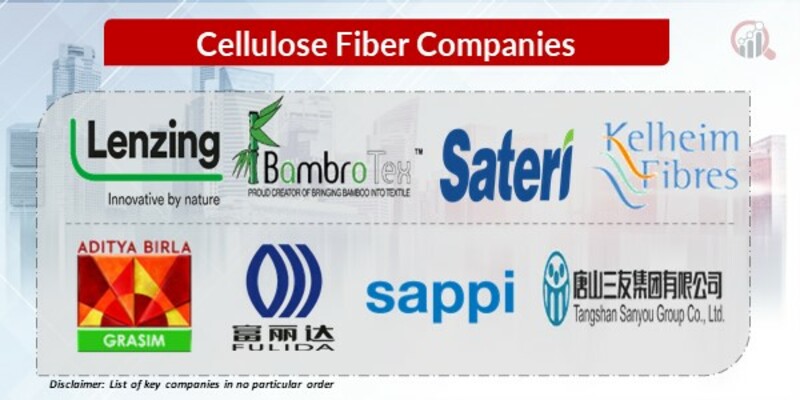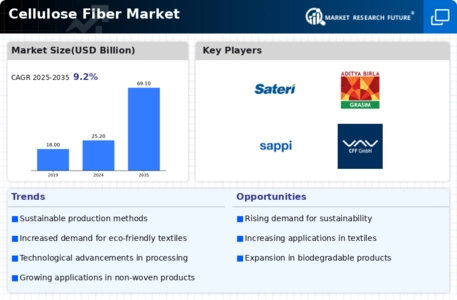Top Industry Leaders in the Cellulose Fiber Market

Cellulose Fiber Market
The cellulose fiber market driven by a growing demand for sustainable and biodegradable materials. This dynamic landscape is characterized by established players and emerging innovators, all vying for a share in this promising market. Let's delve into the competitive strategies, key players, and recent developments shaping the future of this sector.
Competitive Strategies:
-
Sustainability: Leading the charge are companies like Lenzing, Sateri, and Birla Cellulose, who are prioritizing responsible sourcing, eco-friendly production processes, and biodegradable products. This aligns with the rising consumer preference for sustainable materials.
-
Innovation: Players like Eastman Chemical and Daicel Corporation are investing heavily in R&D to develop differentiated fibers with enhanced properties like strength, moisture management, and fire resistance. This caters to specific application demands in industries like apparel, automotive, and medical textiles.
-
Vertical Integration: Integrating pulp production with fiber manufacturing offers cost advantages and control over the supply chain. Examples include Aditya Birla Group and Sappi Limited, who have vertically integrated operations.
-
Geographical Expansion: Established players are expanding their reach into emerging markets like Asia Pacific and Latin America, where demand for cellulose fiber is expected to grow significantly.
-
Partnerships and Collaborations: Collaborations between fiber producers and brands are fostering innovation and accelerating the adoption of sustainable textiles. For instance, The North Face partnered with Lenzing to use Tencel™ in its apparel line.
Factors Influencing Market Share:
-
Production Capacity: Leading players with large production capacities have a significant advantage in terms of cost competitiveness and market share.
-
Product Portfolio: Offering a diverse range of fibers catering to different applications and price points attracts a wider customer base.
-
Brand Recognition: Established brands with strong brand recognition have an edge in capturing consumer preference.
-
Geographical Reach: A wider geographical presence allows companies to tap into diverse markets and mitigate regional risks.
-
Sustainability Credentials: Companies with a strong commitment to sustainable practices and transparency attract environmentally conscious consumers and brands.
Key Players
- LENZING AG (Austria)
- China Bambro Textile Co. Ltd (China)
- Sateri (China)
- Shandong Helon Textile Sci. & Tech. Co. Ltd (China)
- Kelheim Fibers GmbH (Germany)
- Grasim (India)
- Fulida Group Holding Co. Ltd (China)
- Sappi (South Africa)
- Tangshan Sanyou Group (China)
- Eastman Chemical Company (US)
- CFF GmbH & Co. KG (Germany)
- China Hi-Tech Group Corporation (China)
Recent Developments :
In June 2022, in partnership with Birla cellulose, Nanollose debuts a Lee Mathews-designed garment made of Tree-Rree NullarborTM lyocell at the fashion summit.
In May 2022, IoncellOy announced the launch and commercialization of the production of eco-friendly textile fiber technologies.
In March 2022, to establish a long-term business partnership for manufacturing man-made cellulosic fiber, Birla Cellulose and the Swedish developer of textile-to-textile recycling Renewcell signed a Letter of Intent.
Lenzing AG, in July 2021, joined hands with Orange Fiber to start TENCEL branded lyocell fiber from orange pulp as well as wood sources, which is an environmentally friendly innovation for the fashion industry.









